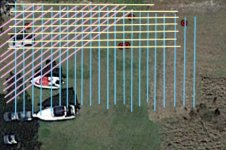woodbutcher
Forum Supporter
I've googled and read hundreds of threads on this subject.And although some are different the majority are the same.The majority states that 15 kHz for gold jewelry, 10kHz and under for copper, silver and gold coins.
I've always wondered am I missing coins by not having a 3kHz coil and by majority vote the answer is no...Anything under 10 kHz seems to be good for coins.Not to say higher frequency won't find coins,cause they will.But it seems 10kHz and under are preferred for coinshooters.
I liked my prior fbs units,but they weren't my favorite for my hunting.Very well built,the best I've owned.And I would put minelab on the top shelf for coinshooting, along with others.I just read so many threads that fbs units push out frequency as high as 100kHz,I can't figure out why they won't pick up gold chains if that's true.In air test mine wouldn't,even rubbed on coil.But for coinshooting the fbs are hard to beat.
And the majority I've read state to get a coin machine for coins,and a jewelry machine for jewelry. Although some machines are good at both,none excell at both.Makes sense why so many own the Etrac and At pro together.
I have notices the machines I have ran at 3 kHz were quiet and ran very stable.Change the frequency to 14 and above the same machines read more tiny targets and weren't as quiet. Most gold rings will be picked up at 3 kHz though,no chains though,and most detectors aside from the At pro will not register gold chains.From my experience.
If I can continue this hobbies later in the year I think I will be running 3 kHz for good,just seems to be very stable and doesn't read every piece of foil etc. I could miss gold chains but that's ok,I'll save that part of hunting for places like swimming holes and parks.
I've always wondered am I missing coins by not having a 3kHz coil and by majority vote the answer is no...Anything under 10 kHz seems to be good for coins.Not to say higher frequency won't find coins,cause they will.But it seems 10kHz and under are preferred for coinshooters.
I liked my prior fbs units,but they weren't my favorite for my hunting.Very well built,the best I've owned.And I would put minelab on the top shelf for coinshooting, along with others.I just read so many threads that fbs units push out frequency as high as 100kHz,I can't figure out why they won't pick up gold chains if that's true.In air test mine wouldn't,even rubbed on coil.But for coinshooting the fbs are hard to beat.
And the majority I've read state to get a coin machine for coins,and a jewelry machine for jewelry. Although some machines are good at both,none excell at both.Makes sense why so many own the Etrac and At pro together.
I have notices the machines I have ran at 3 kHz were quiet and ran very stable.Change the frequency to 14 and above the same machines read more tiny targets and weren't as quiet. Most gold rings will be picked up at 3 kHz though,no chains though,and most detectors aside from the At pro will not register gold chains.From my experience.
If I can continue this hobbies later in the year I think I will be running 3 kHz for good,just seems to be very stable and doesn't read every piece of foil etc. I could miss gold chains but that's ok,I'll save that part of hunting for places like swimming holes and parks.





